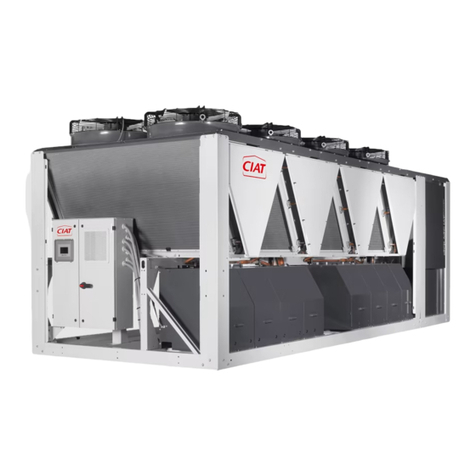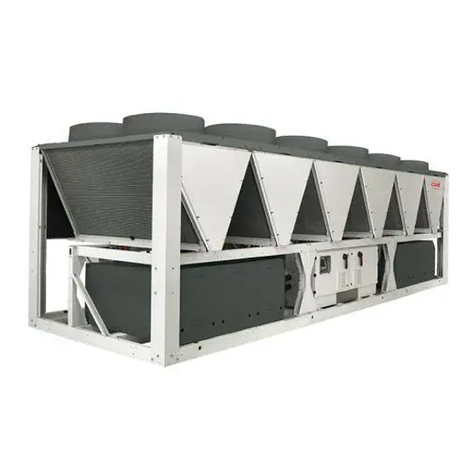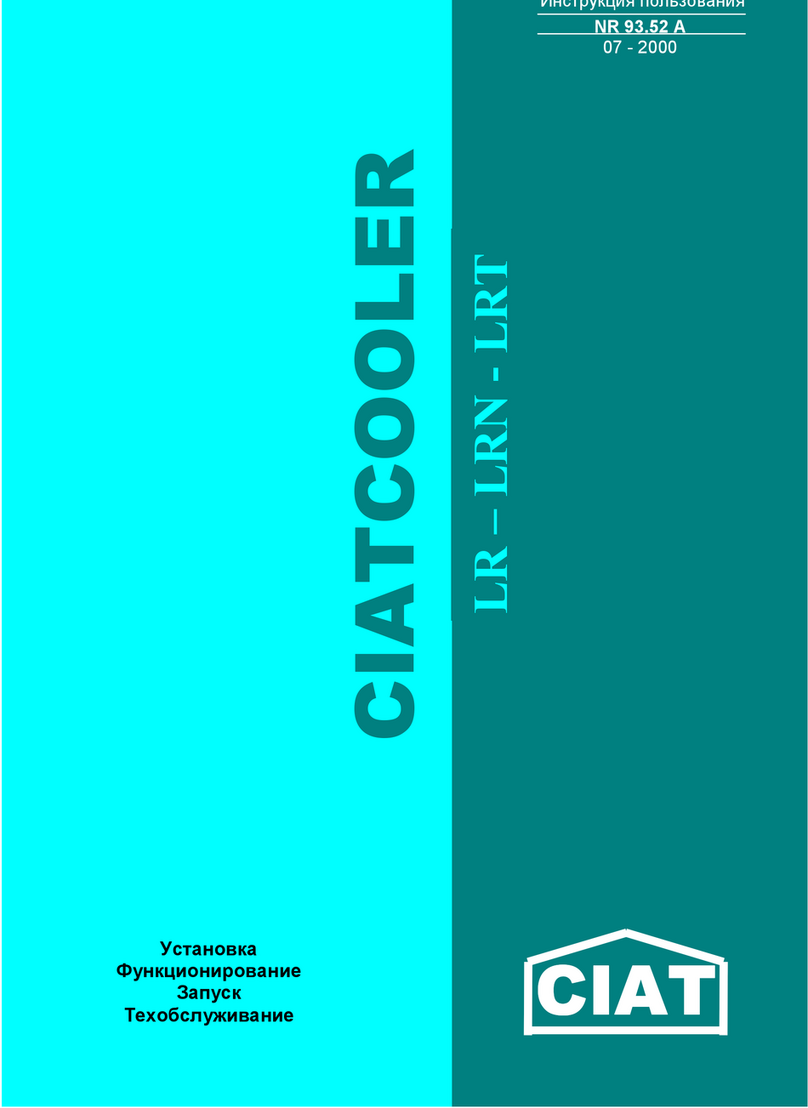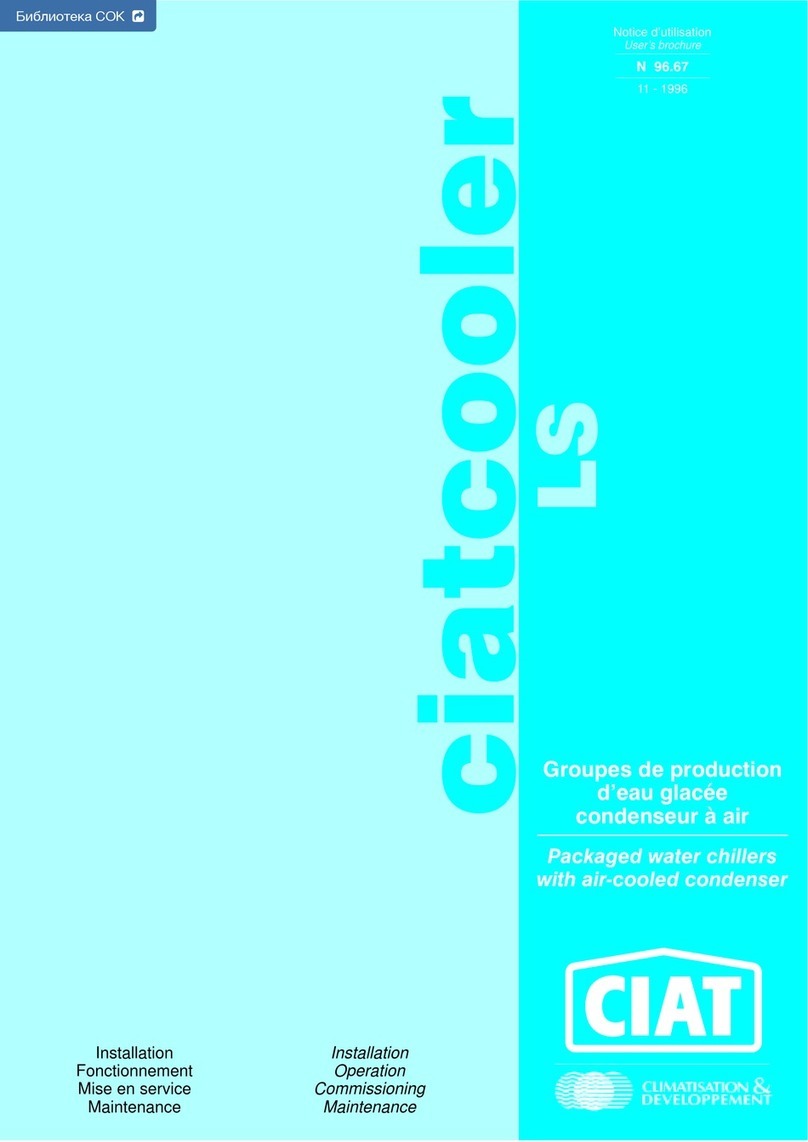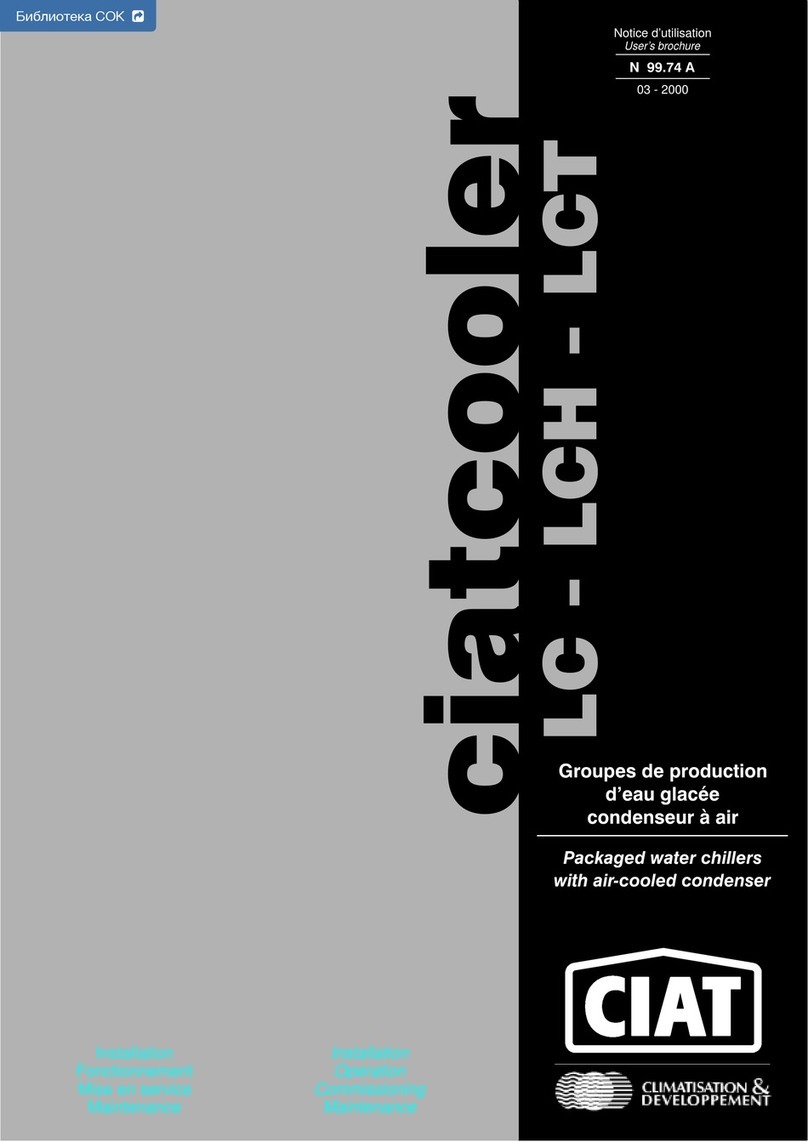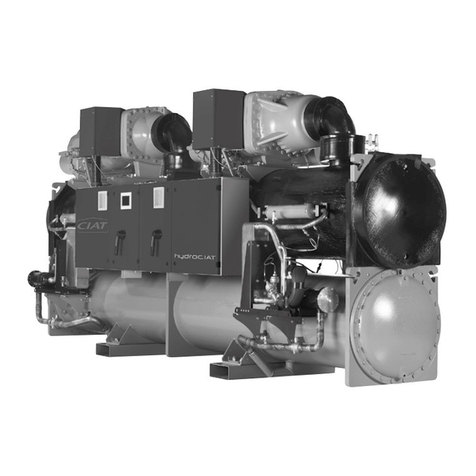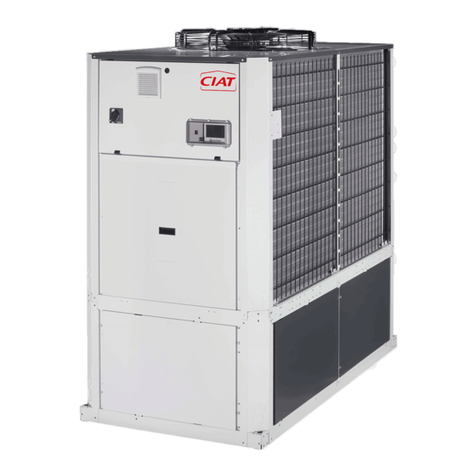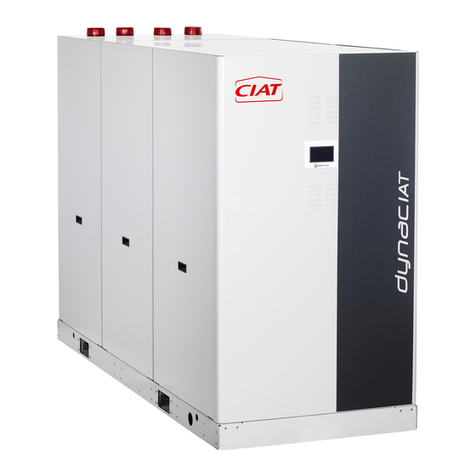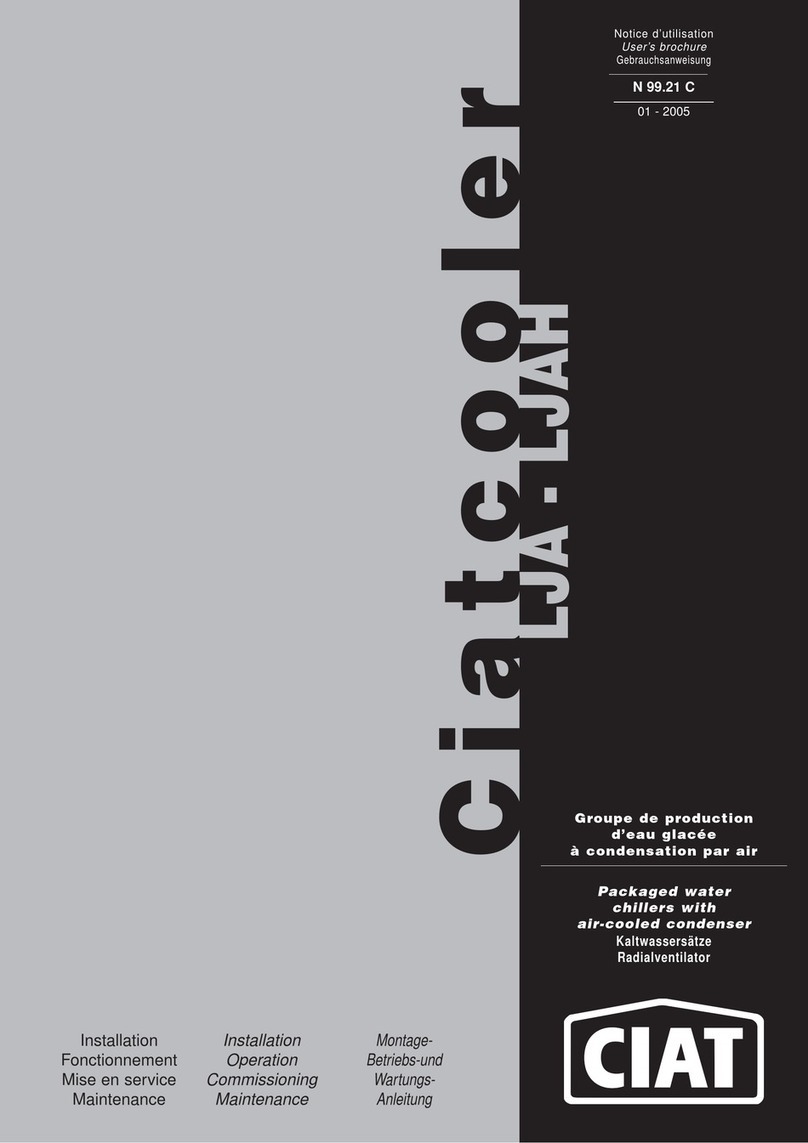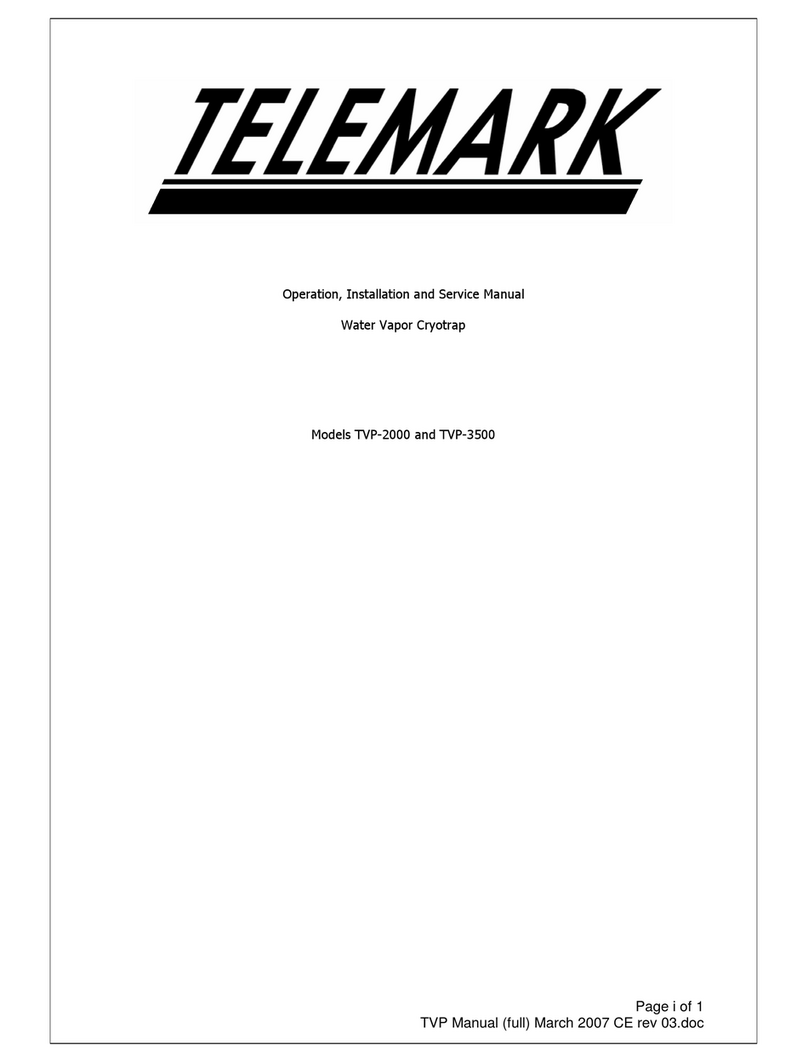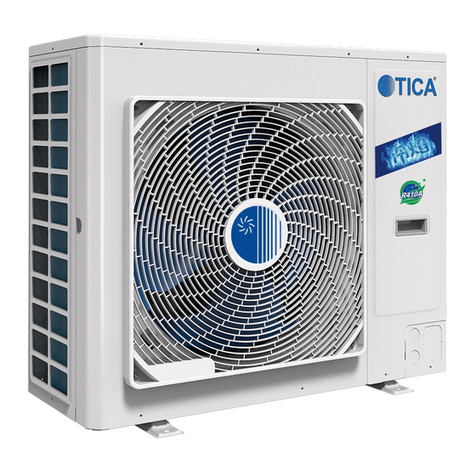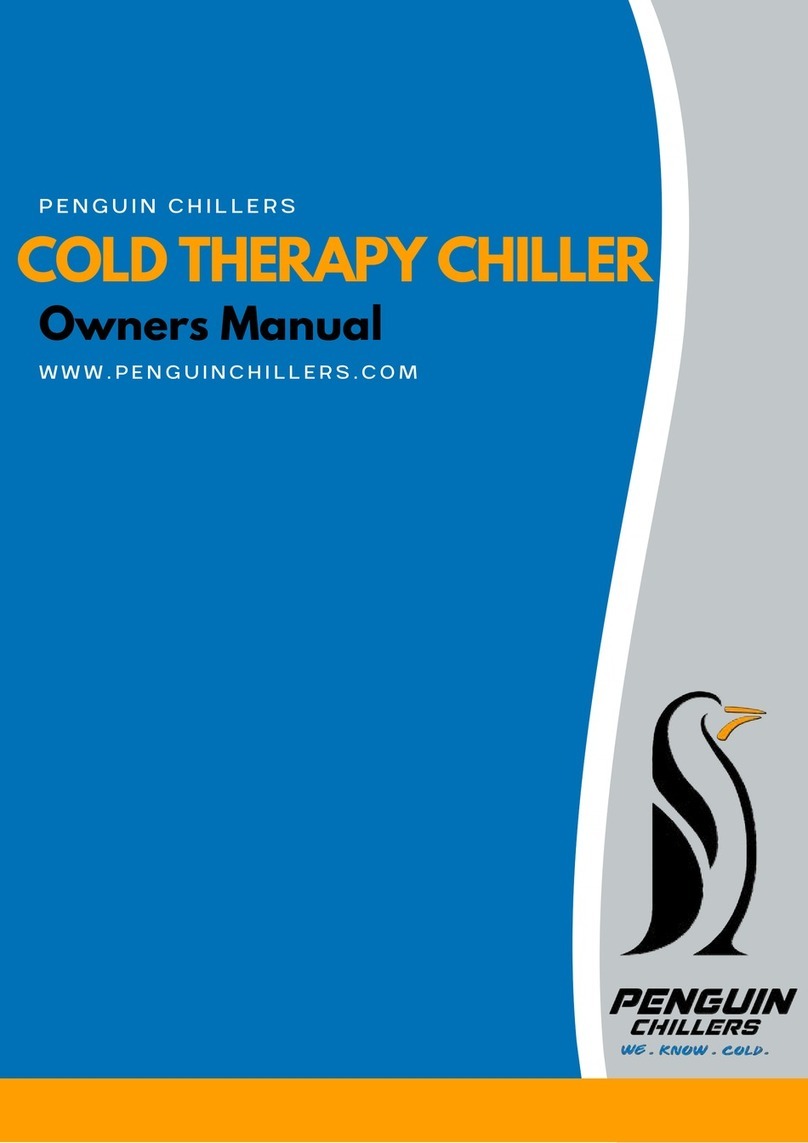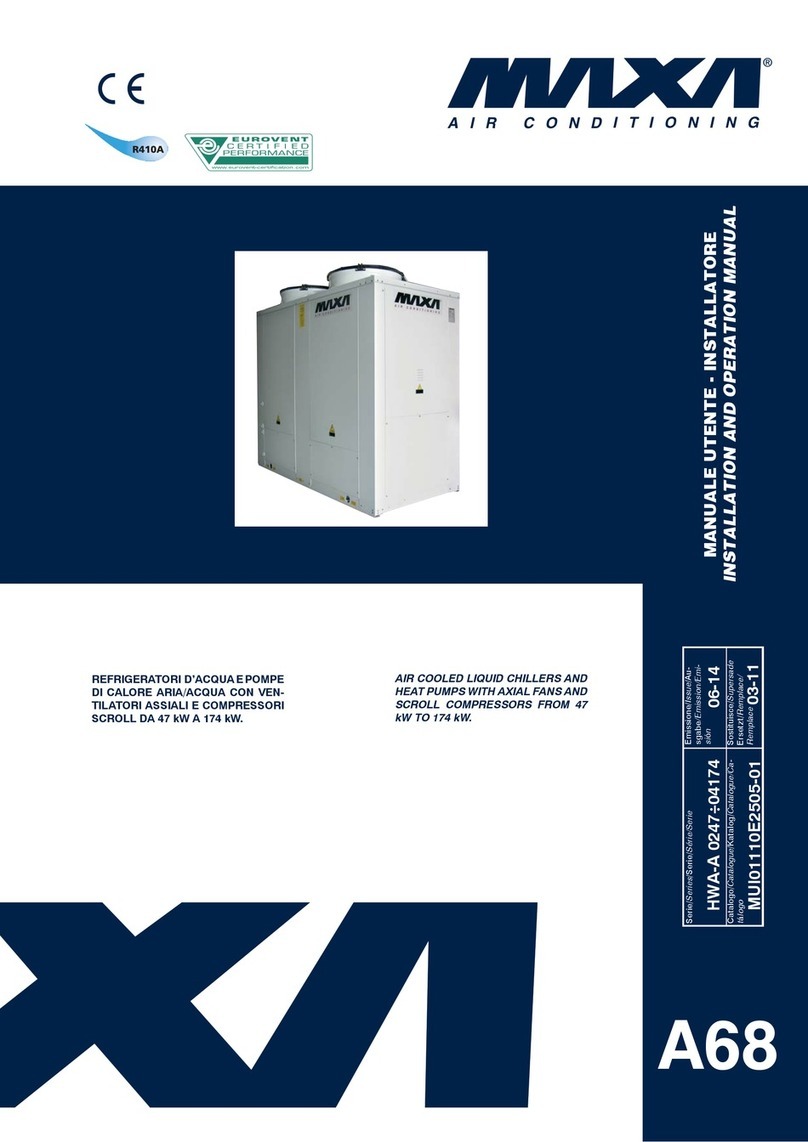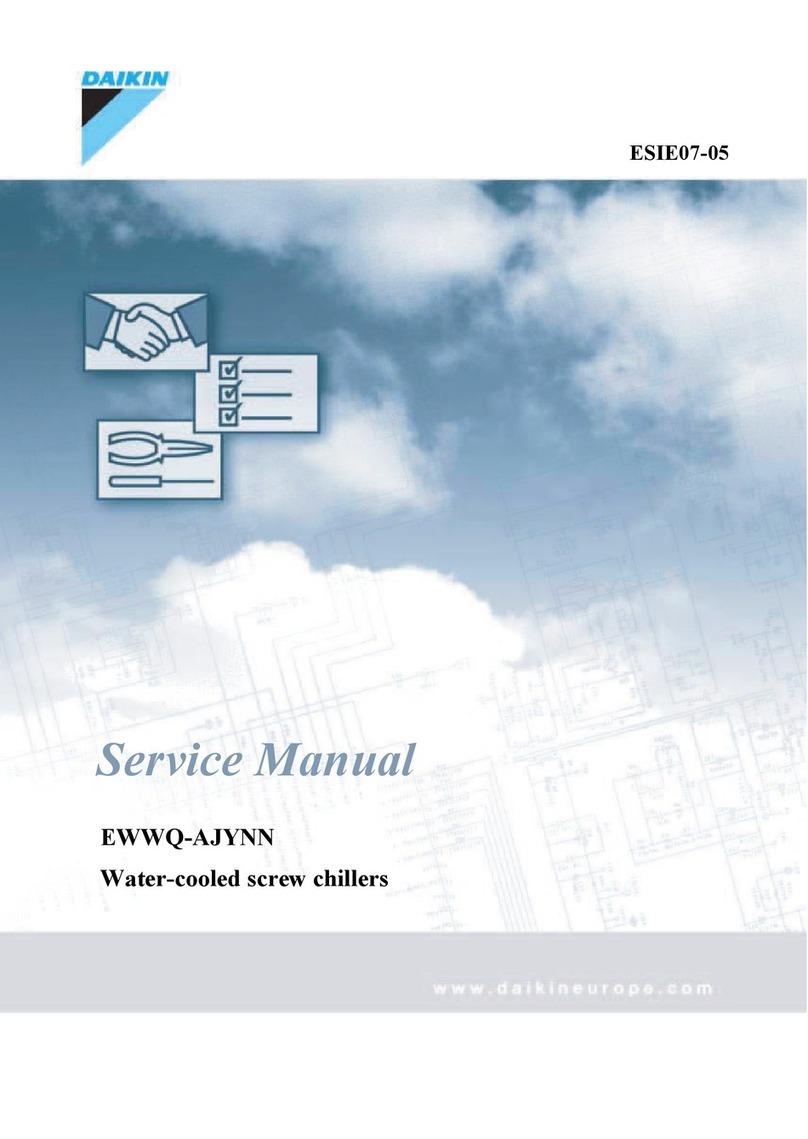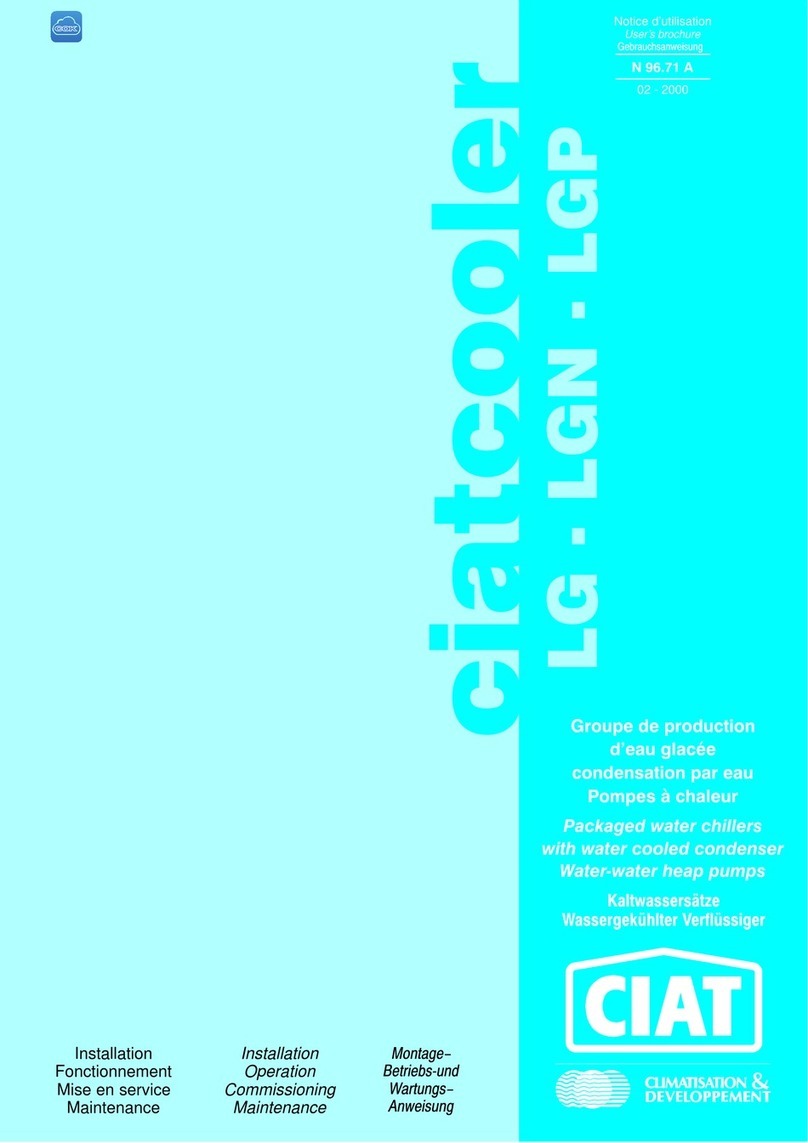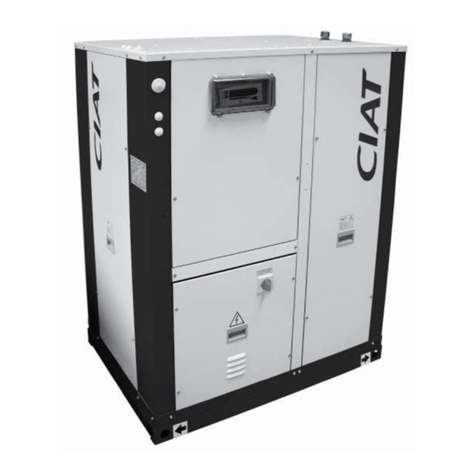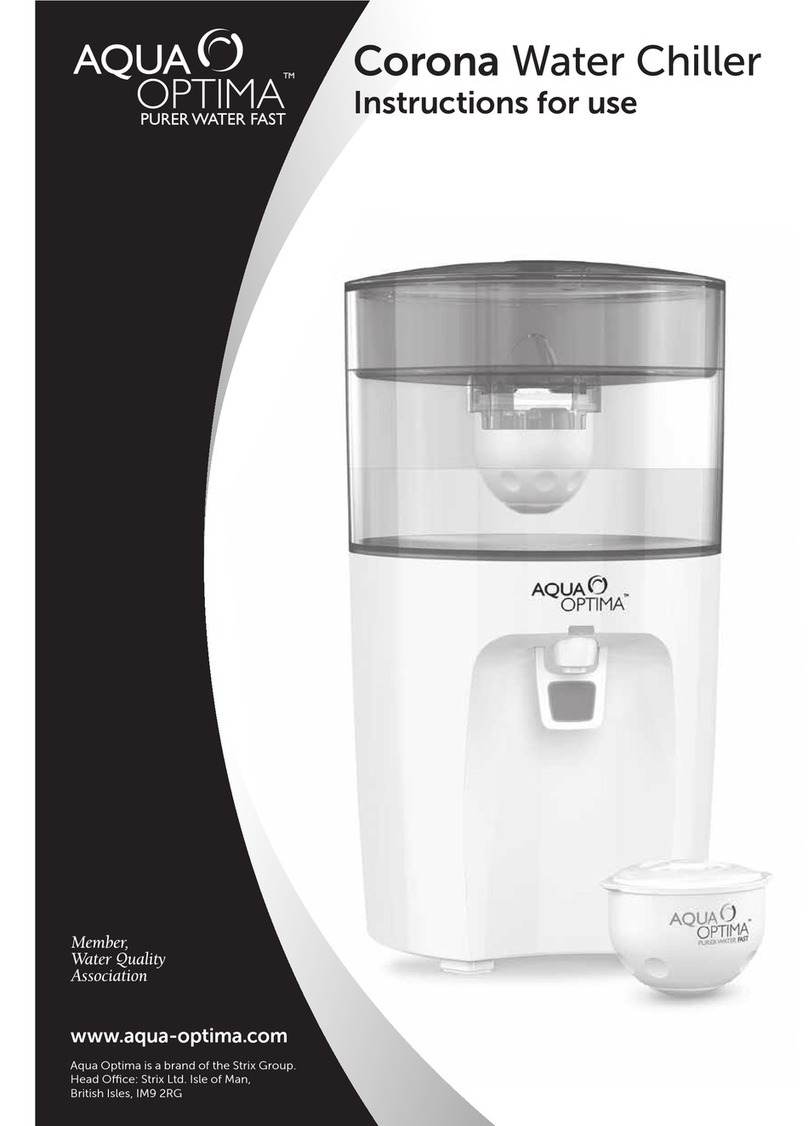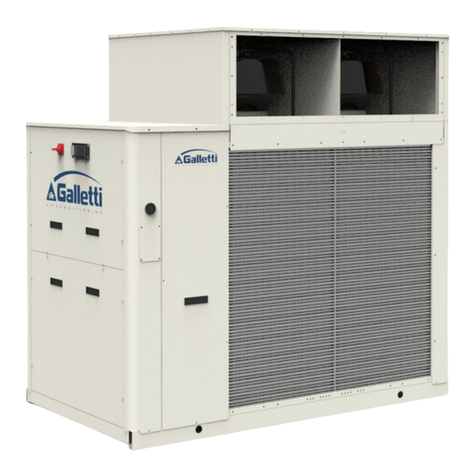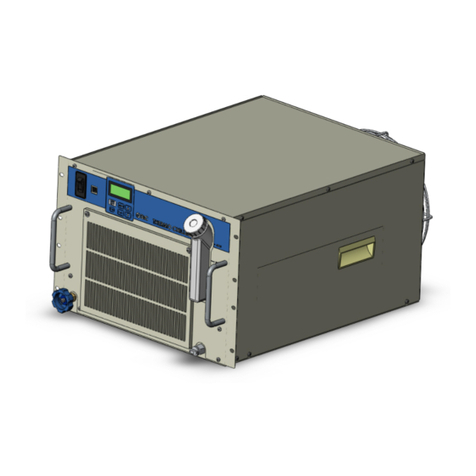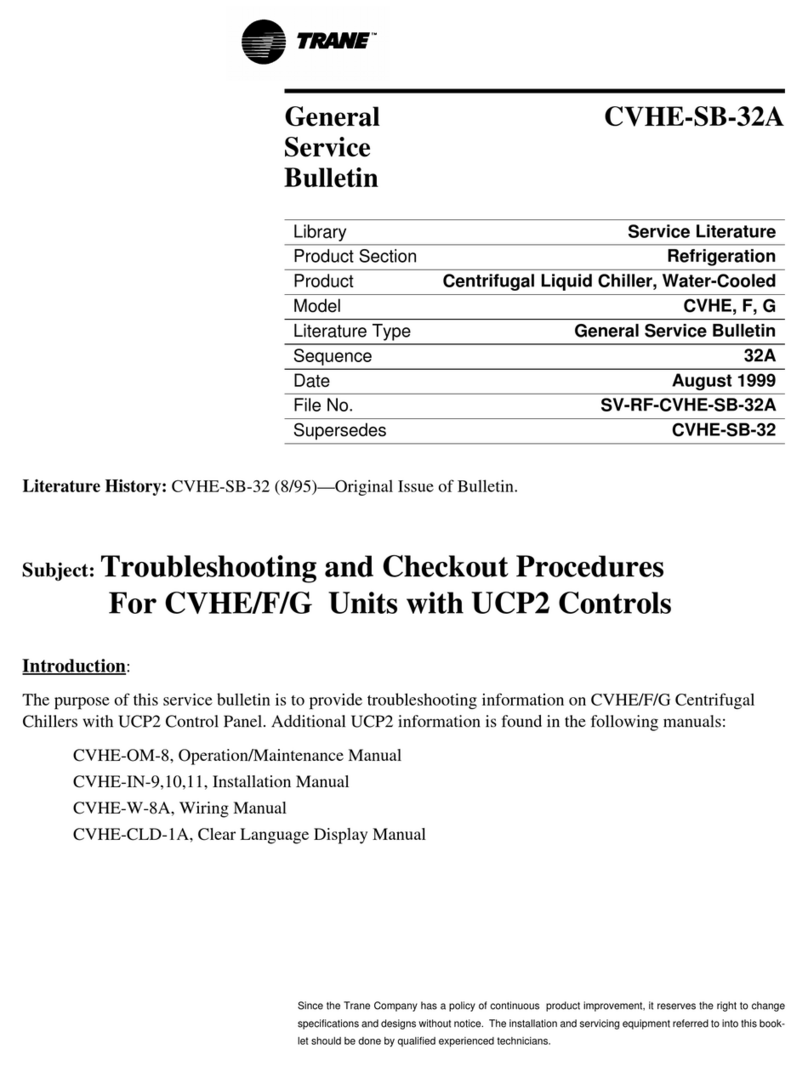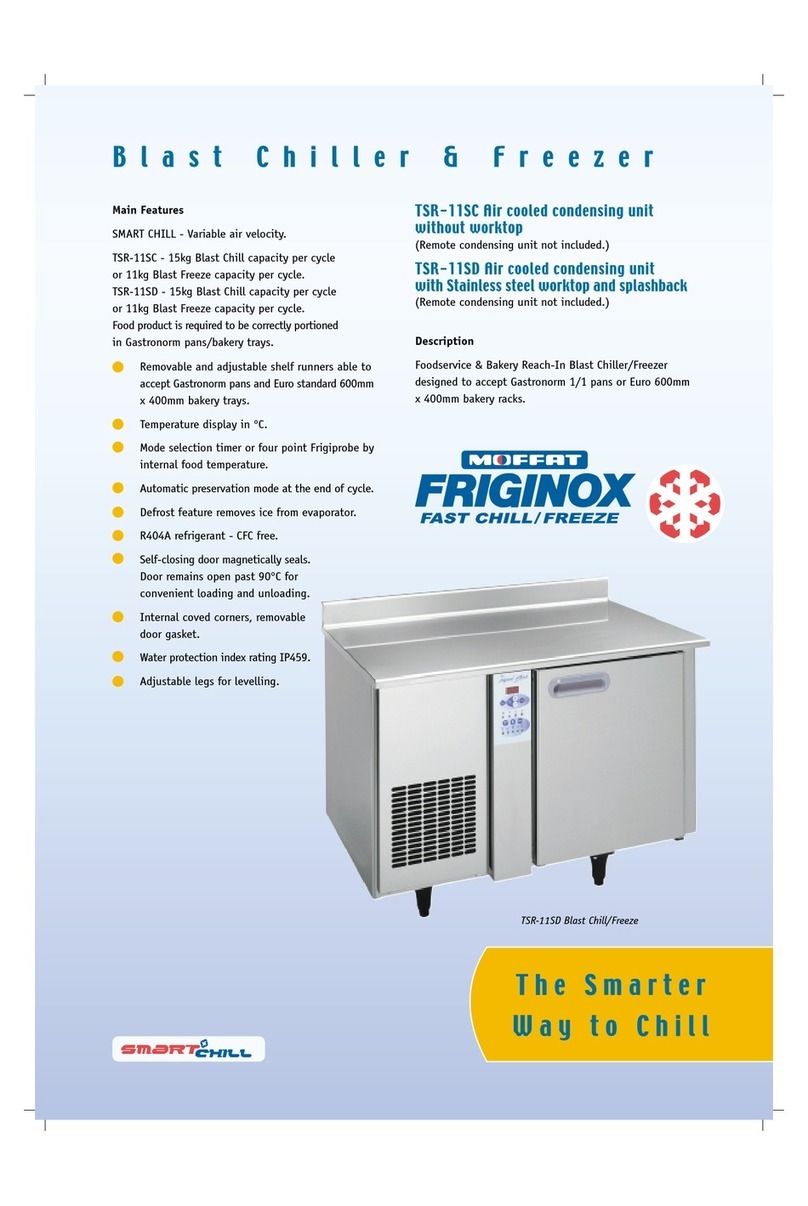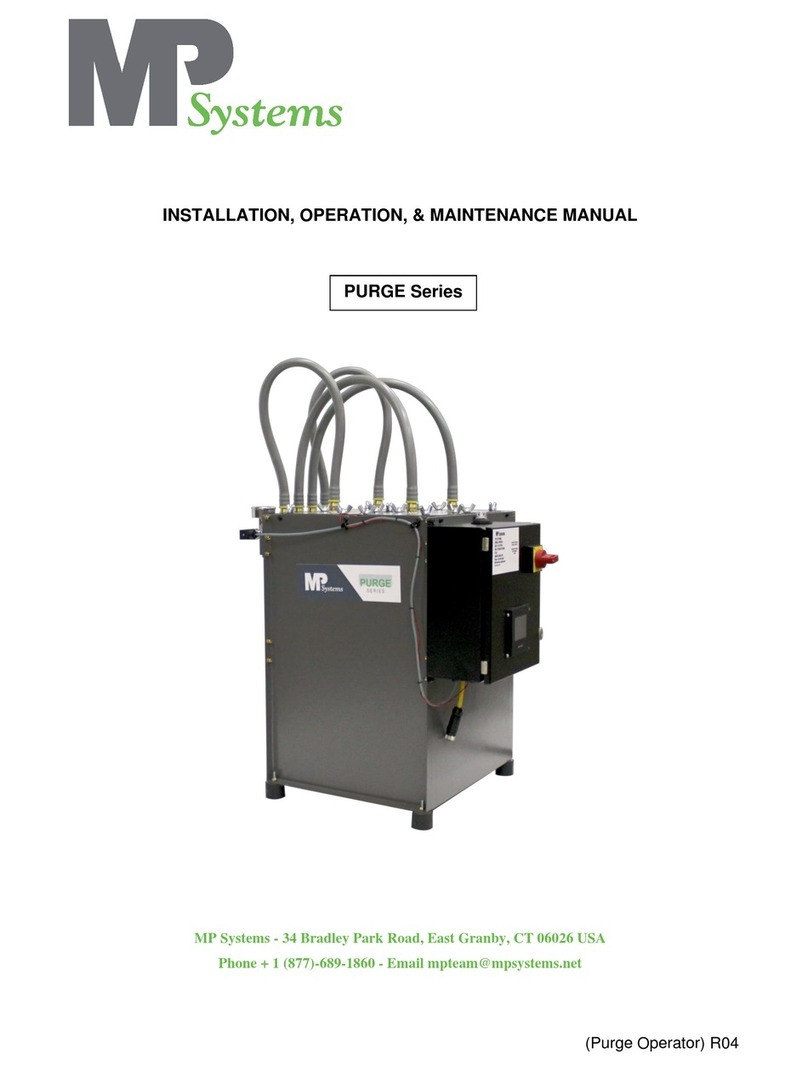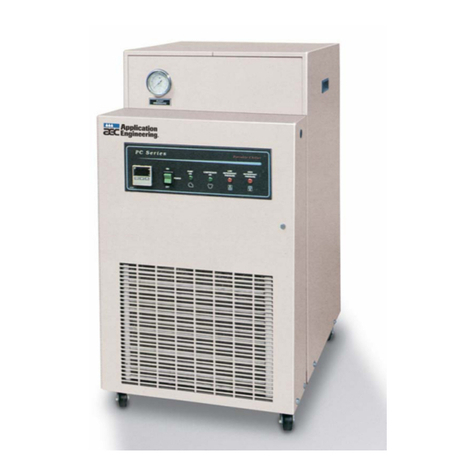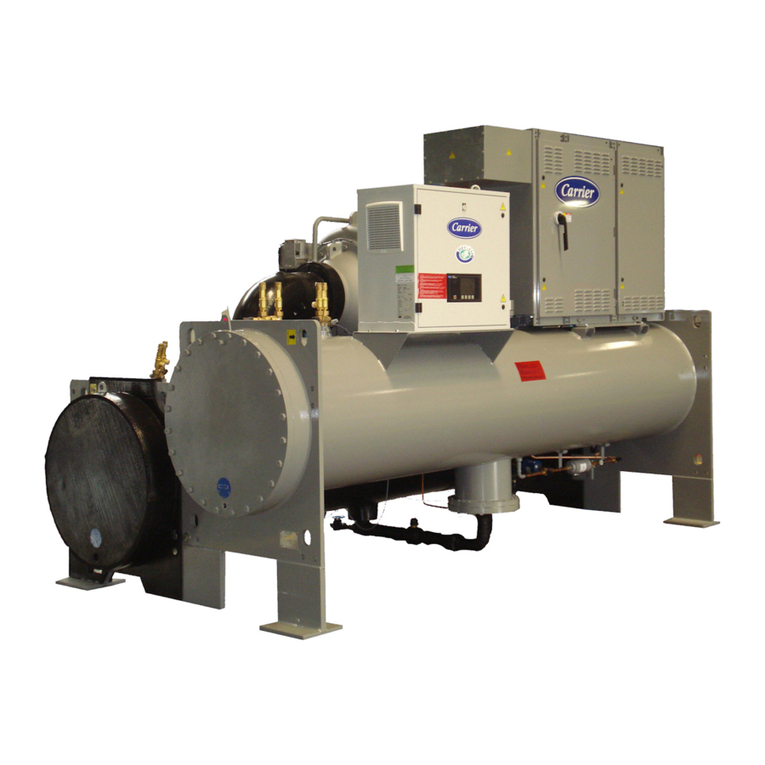
6
Conseils de sécurité
Pour éviter tous risques d’accidents au
moment des opérations d’installation, de
mise en service et de règlage, il est impé-
ratif de prendre en considération les spé-
cificités du matériel tels que :
– circuits frigorifiques sous pression
– présence de fluide frigorigène
– présence de tension
– implantation (toiture et terrasse à
niveau élevé)
Seul du personnel expérimenté et qualifié
peut intervenir sur de tels équipements.
Il est impératif de suivre les recommanda-
tions et instructions qui figurent sur les
notices d’entretien, les étiquettes ou ins-
tructions particulières.
Se conformer impérativement aux nor-
mes et règlementation en vigueur.
IMPORTANT : avant d’intervenir sur le
groupe, vérifier que le courant d’alimenta-
tion est bien coupé au niveau du section-
neur général intégré à l’armoire électri-
que de l’appareil.
Choix de l'emplacement
du groupe
Avant la manutention, l’implantation et le
raccordement du groupe, l’installateur
devra vérifier les points suivants :
– Ces groupes sont à placer à l’extérieur
– La surface du sol ou de la structure
devra être suffisamment résistante pour
supporter le poids du groupe.
– Positionner l’unité au-dessus de la hau-
teur moyenne de neige dans la région où
le groupe est installé.
– Positionner l’unité en zone non inondable
– L’appareil devra être parfaitement de
niveau.
– Le groupe doit être parfaitement acces-
sible pour permettre d’effectuer aisément
les opérations de service et d’entretien.
– Aucun obstacle ne devra gêner la libre
circulation de l’air sur le condenseur à air
(aspiration et soufflage).
ATTENTION à la recirculation de l’air.
– Niveau sonore : nos appareils ont été
étudiés pour un fonctionnement à faible
niveau sonore pour ce type de matériel.
Il faut cependant se soucier, dès la
conception de l’installation, de l’environ-
nement extérieur pour le bruit rayonné et
du type de bâtiment pour le bruit transmis
en aérien et solidien (vibrations).
Faire réaliser éventuellement une étude
par un acousticien.
Safety recommendations
To prevent any risk of accidents during
the installation, commissioning and set-
ting operations, it is essential to account
for the equipment’s specific characteris-
tics such as :
– pressurised refrigerant circuits
– presence of refrigerant fluid
– presence of voltage
– installation (roof-top or terrace at high
level)
Only experienced and qualified person-
nel should work on such equipment.
It is essential to follow the recommenda-
tions and instructions given in the mainte-
nance manuals, on labels or in specific
instructions.
Current standards and regulations must
be complied with.
IMPORTANT : before intervening on the
unit, check that the power supply has
been switched off.
Choice of unit location
Before handling, installing and connect-
ing the unit, the installer should check the
following points :
– These units are to be placed outside
– The surface of the floor or the structure
should be resistant enough to withstand
the weight of the unit.
– Position the unit above the average
snow height in the region in which the unit
is installed.
– The unit should be perfectly level.
– The unit should be perfectly accessible
in order to be able to perform servicing
and maintenance operations easily.
– No obstacles should block the free cir-
culation of air on the air condenser (intake
and blowing).
CAUTION with air recirculation
– Noise level: our units have been
designed for operation at a low noise level
for this type of equipment.
However, from the design stage of the
installation, it is important to account for
the external environment in terms of
radiated noise and the type of buildings in
terms of noise transmitted via the air or
solid materials (vibrations).
It may be necessary to have a study per-
formed by an acoustic engineer.
Sicherheitshinweise
Um jegliches Unfallsrisiko bei der Installation,
Inbetriebnahme und Einstellung der Geräte zu
vermeiden, sind folgende Besonderheiten unbe
dingt zu beachten:
- die Kältekreise stehen unter Druck
- das Kältemittel ist bereits eingefüllt
- es liegt Spannung an
- Gefahren des Aufstellungsorts (Höhenlage von
Dach oder Terrasse)
Die Geräte dürfen nur von geschultem und erfah
renem Fachpersonal gehandhabt und gewartet
werden.
Die Anweisungen und Empfehlungen in der War
tungsanleitung und auf den Schildern sowie Son
deranweisungen sind unbedingt zu lesen und ein
zuhalten.
Die Vorschriften und geltenen Gesetze sind zu
beachten.
WICHTIG: Vor jedem Eingriff ist zu kontrollieren,
ob die Stromversorgung abgeschaltet wurde.
Aufstellungsort des Kaltsatzes
Vor der Beförderung, Aufstellung und dem Ansch
luß des Kaltwassersatzes hat der Installateur fol
gende Punkte zu überprüfen:
- Die Kaltwassersätze werden im Freien aufgestellt.
- Die Stellfläche oder das Untergestell sind stabil
genug, um die Last des Geräts tragen zu können.
- Das Gerät ist höher als die durchschnittliche
Schneehöhe aufzustellen, wenn es in der Gegend
im Winter schneit.
- Das Gerät steht völlig waagerecht (Wasser
waage).
- Der Kaltwassersatz ist leicht zugänglich, um
Reparatur- und Wartungsarbeiten durchführen zu
können.
- Die Luftzirkulation des luftgekühlten Verflüssig
ers wird nicht behindert (Ansaugung und Ausbla
sung).
ACHTUNG: Luftrückfluß vermeiden.
- Schallpegel: Die Geräte weisen bei Betrieb
einen besonders niedrigen Schallpegel auf.
Dennoch ist bei der Planung der Aufstellweise der
Geräte die äußere Umgebung in Betracht zu zie
hen, um eine Geräuschweiterleitung und -
verstärkung durch die Luft und das Gebäude
selbst (Vibrationen) auf ein Minimum zu begren
zen.
Wenn nötig ist ein Akkustiktechniker hinzuzuzie
hen.







